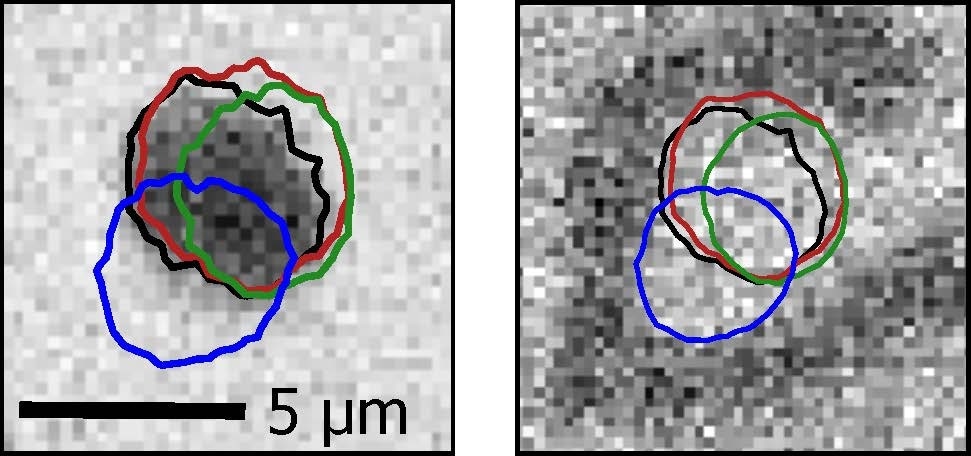Although hurricanes are a result of global meteorological events, they have started to occur more regularly in Europe.
 The boundaries of differently shaped skyrmions (left) are found at coinciding positions. And even the boundaries of stripe-like structures (right) match those positions. Image Credit: Raphael Gruber
The boundaries of differently shaped skyrmions (left) are found at coinciding positions. And even the boundaries of stripe-like structures (right) match those positions. Image Credit: Raphael Gruber
However, when scientists focus an optical Kerr microscope on thin magnetic material films, they observe a similar phenomenon occurring in the microcosm under the correct circumstances: a type of micro-scale magnetic hurricane. These whirlwind-like magnetic formations are known as skyrmions in physics.
The plan is to harness this phenomenon to create data processing or storage equipment. For those applications, it is necessary to take advantage of the motion of the mini-whirlwinds, which themselves behave as stand-alone particles or so-called quasi-particles.
The skyrmions can move as a result of electrical currents and temperature impacts. While stronger “pushes” are required for some applications, such as non-conventional computing, random thermal motion is preferable in others.
Pinning: When Skyrmions Meet the “Obstacle Course”
There are always imperfections in the nanometer-thin material films where skyrmions can be seen. As a result, pinning, or being trapped, is a possibility for these tiny magnetic whirlwinds. Most of the time, they become trapped and are unable to escape. It is like attempting to roll a little ball across an old table’s scratched and gouged surface.
If there is a sufficiently significant depression, the ball will divert off its course and become trapped. Skyrmions can become imprisoned in this way, which might be problematic for applications that depend on the thermal mobility of the quasi-particles. This movement can come to an end as a result of pinning.
Understanding the Fundamentals of Pinning
I have used a Kerr microscope to study skyrmions of just a micrometer in size—or, to be more precise, their pinning behavior.
Raphael Gruber, Doctoral Candidate, Johannes Gutenberg University Mainz
Numerous hypotheses already exist to explain how the impact works. The majority of them focus on skyrmions as a whole, or, in other words, on the movement of their centers. There have even been a few investigational experiments; however, they all took place in conditions of severe pinning, in which the skyrmions are completely immobile.
Gruber’s findings offer fresh, intriguing insights.
Gruber added, “My investigations are based on weak pinning allowing the skyrmions to move a bit and keep hopping until they get caught up somewhere else. Skyrmions do not fall like balls into a hole. What happens is that it sticks to something at its surface.”
The supporting findings were presented in Nature Communications.
The latest results, which are an outcome of several years of cooperation with theoretical physics groups, also excited Professor Mathias Kläui, head of the research group.
Under the aegis of the Skyrmionics Priority Program funded by the German Research Foundation and the Spin+X Collaborative Research Center, we have been investigating the dynamics of spin structures together with our counterparts working in the field of theoretical physics. I am pleased to say that this very productive collaboration, especially also between postgraduates in the involved groups, has generated these fascinating results.
Professor Mathias Kläui, Research Group Lead, Johannes Gutenberg University Mainz
Dr. Peter Virnau, the director of a Mainz theoretical physics group, added, “Skyrmions are a relatively new aspect in my research. My introduction to them was made possible by funding provided by the State of Rhineland-Palatinate through the TopDyn—Dynamics and Topology Top-Level Research Area at JGU. I am glad that our numerical methods could contribute to a better understanding of the experimental data.”
Journal Reference:
Gruber, R., et al. (2022) Skyrmion pinning energetics in thin film systems. Nature Communications. doi:10.1038/s41467-022-30743-4